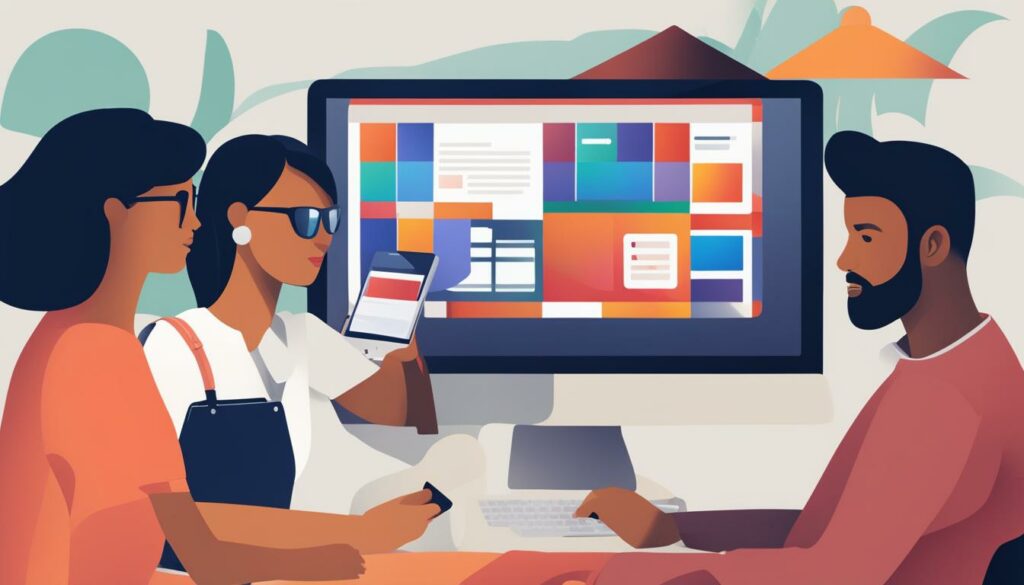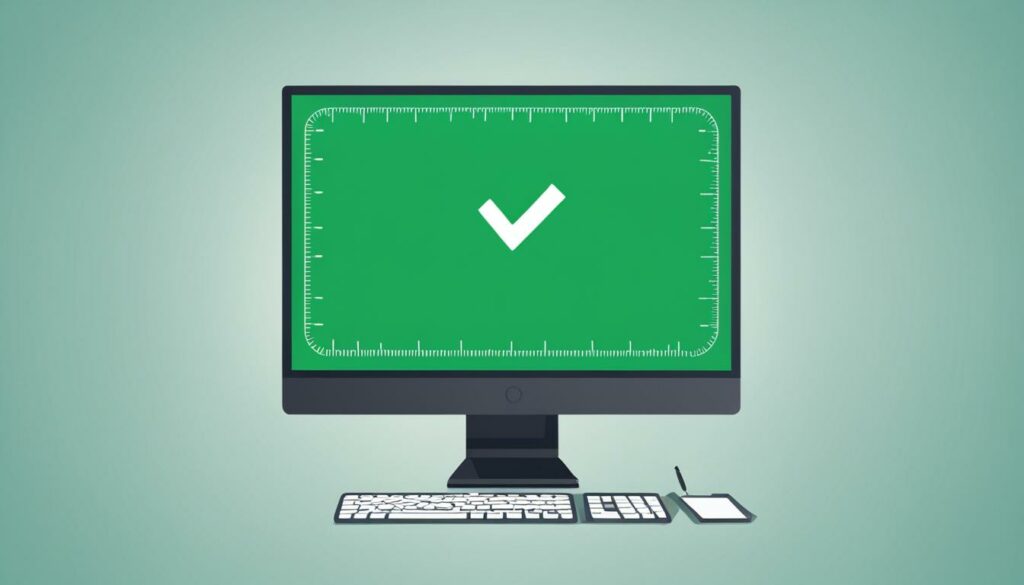Welcome to the world of web accessibility! In today’s digital age, it’s crucial to ensure that your website is accessible to everyone, regardless of their abilities. By following web accessibility guidelines and implementing inclusive design practices, you can create a website that caters to a diverse range of users. Whether you’re a business owner, a developer, or a content creator, understanding the basics of web accessibility is essential for reaching a wider audience and providing an inclusive user experience.
Web accessibility involves designing and developing websites that can be easily navigated and understood by individuals with disabilities. This includes complying with WCAG 2.1 standards, which serve as a comprehensive framework for accessible website development. By adhering to these guidelines, you can ensure that your website is compatible with assistive technologies, such as screen readers, and features an accessible user interface and content structure.
Why is web accessibility important? Not only does it allow businesses to demonstrate their commitment to inclusivity, but it also opens up opportunities to connect with a broader market. Inclusive web design improves user experience, boosts brand loyalty, and ensures compliance with legal requirements, such as ADA compliance for websites. By making your website accessible, you can create a positive impact on individuals, businesses, and society as a whole.
Key Takeaways:
- Web accessibility is about designing and developing websites that can be used by people with disabilities.
- Following web accessibility guidelines, such as WCAG 2.1, is essential for creating inclusive web design.
- Accessible websites reach a wider audience, improve user experience, and demonstrate a commitment to inclusivity.
- Web accessibility benefits not only individuals with disabilities but also users without disabilities.
- Making your website accessible involves implementing strategies like keyboard navigation, high-contrast colors, alt text for images, and heading hierarchies.
Now that you understand the basics of web accessibility, let’s explore its impact, the importance of complying with accessibility standards, and how to make your website accessible.
The Impact of Web Accessibility
Web accessibility has a profound impact on individuals, businesses, and society as a whole. By ensuring that websites are accessible, we open up the digital world to people with disabilities, breaking down the barriers they face in the physical world. But the benefits of web accessibility extend beyond individuals with disabilities. They also enhance the experience for people without disabilities, including those using mobile devices, older individuals, and those facing temporary or situational limitations.
Web accessibility is essential for creating equal access and equal opportunity. It allows everyone to navigate and interact with the web, regardless of their abilities. Moreover, web accessibility has a strong business case. When websites are accessible, they improve the overall user experience and satisfaction. This, in turn, drives innovation and expands market reach.
“Web accessibility is not just about accommodating disabilities; it’s about creating an inclusive digital space where everyone can participate and contribute.”
Creating an accessible user interface and content structure is key to ensuring that websites are usable by everyone. It involves implementing design elements and features that make it easy for individuals with disabilities to perceive, understand, navigate, and interact with the web. By prioritizing web accessibility, businesses demonstrate their commitment to inclusivity, improve user experience, and foster brand loyalty.
Web Accessibility Benefits Chart
| Web Accessibility Benefits | |
|---|---|
| 1. | Improved usability for people with disabilities |
| 2. | Enhanced user experience for everyone |
| 3. | Better mobile device compatibility |
| 4. | Increased accessibility for older individuals |
| 5. | Improved usability for those facing situational or temporary limitations |
What is Web Accessibility?
Web accessibility is all about designing and developing websites, tools, and technologies in a way that allows people with disabilities to perceive, understand, navigate, and interact with the web. It encompasses various types of disabilities including auditory, cognitive, neurological, physical, speech, and visual impairments, ensuring that no one is left behind.
But web accessibility is not limited to individuals with disabilities alone. It extends its benefits to people without disabilities as well. For instance, individuals using mobile devices or facing temporary disabilitiesor situational limitations can also benefit from accessible design. Even those with a slow internet connection will find it easier to access and contribute to web content that is designed with accessibility in mind.
“Web accessibility means designing and developing websites, tools, and technologies in a way that allows people with disabilities to perceive, understand, navigate, and interact with the web.”
By ensuring web accessibility, businesses and organizations can provide equal opportunities for all users, regardless of their abilities or limitations. It promotes inclusion, diversity, and equal access to information and services, leading to a more inclusive and accessible web for everyone.
The Importance of Web Accessibility
Web accessibility is crucial for several reasons. By ensuring that your website is accessible, you can improve the user experience for individuals with disabilities, creating an inclusive online environment. Additionally, web accessibility is essential for ADA compliance and to meet legal requirements. Failure to make your website accessible can result in lawsuits and legal issues. Prioritizing accessibility not only helps you avoid legal trouble but also demonstrates your commitment to inclusivity, which can boost brand loyalty and advocacy.

When your website has an accessible user interface, it becomes easier for people with disabilities to navigate and interact with your content. This improves their overall experience on your website, making it more enjoyable and seamless.
Inaccessible websites have faced lawsuits for not providing equal access to individuals with disabilities. While there might not be enforceable laws specifically related to web accessibility for non-government websites, it’s still essential to prioritize accessibility to avoid legal issues.
Avoiding lawsuits and legal trouble is not the only benefit of web accessibility. It also has the potential to improve your overall user experience and boost brand loyalty. When you make your website accessible, you show that you value and cater to all users, which can lead to increased customer satisfaction and loyalty.
By implementing web accessibility, you create a positive user experience for people with disabilities, build brand trust and loyalty, and demonstrate social responsibility. Making your website inclusive and accessible is not just the right thing to do; it is also a strategic business decision that can benefit both your users and your brand.
Web Accessibility Standards
The Web Content Accessibility Guidelines (WCAG) serve as the international standards for creating accessible websites. Developed by the W3C Web Accessibility Initiative (WAI), these guidelines provide a framework to ensure that websites are designed in a way that enables users to perceive, operate, understand, and interact with content effectively. By following the WCAG, websites can achieve the desired level of accessibility.
The WCAG consists of four primary principles that form the foundation of web accessibility:
- Perceivable: Websites should provide content that can be perceived by all users, regardless of their sensory capabilities. This includes providing alternatives for non-text content, such as images or audio.
- Operable: Websites should be operable by all users, including those with mobility or dexterity impairments. This may include features like keyboard accessibility and ensuring that users have enough time to interact with content.
- Understandable: Websites should be designed in a way that is easily understandable for all users. This can involve utilizing clear and simple language, organizing content consistently, and providing instructions or cues when necessary.
- Robust: Websites should be developed using technologies that are compatible with a wide range of assistive technologies and future web standards. This ensures that the website remains accessible and usable as new technologies emerge.
By adhering to these principles, websites can provide a more inclusive web experience, enabling users with disabilities to access, navigate, and engage with content effectively.

| WCAG Principles | Description |
|---|---|
| Perceivable | Websites must provide content that can be perceived by all users, including those with sensory disabilities. This includes providing alternatives for non-text content, such as images or audio. |
| Operable | Websites must be operable by all users, particularly those with mobility or dexterity impairments. This may involve features such as keyboard accessibility and ensuring users have enough time to interact with content. |
| Understandable | Websites must be designed in a way that is easily understandable for all users. This may involve utilizing clear language, organizing content consistently, and providing instructions or cues when necessary. |
| Robust | Websites must be developed using technologies that are compatible with assistive technologies and future web standards. This ensures the website remains accessible and usable as new technologies emerge. |
Following these web accessibility guidelines is critical for creating an inclusive online environment and facilitating equal access for all users.
How to Make Your Website Accessible
Making your website accessible is crucial to ensure that all users, regardless of their abilities, can access and navigate your content. Here are some effective strategies to improve website accessibility:
1. Keyboard Navigation
Ensure that your website can be easily navigated and interacted with using only the keyboard. This is particularly important for individuals who have motor disabilities or rely on assistive technologies such as screen readers.
2. High-Contrast Colors
Use high-contrast color combinations to improve readability and ensure that your content is easily discernible for all users. This is especially beneficial for individuals with visual impairments or those who have difficulty reading texts with low contrast.
3. Alt Text for Images
Include descriptive alt text for all images on your website. Alt text provides alternative text descriptions that can be read by screen readers, allowing visually impaired individuals to understand the content of the images.
4. Heading Hierarchies
Use proper heading hierarchies to structure and organize your content. This helps users navigate your website more easily and allows screen readers to interpret the content accurately. Use H1 for main headings, followed by H2, H3, and so on.
Implementing these techniques is a step towards creating a more inclusive online environment and ensuring that everyone can access and engage with your website.

Website accessibility is crucial for creating an inclusive user experience. By prioritizing keyboard navigation, using high-contrast colors, providing alt text for images, and using heading hierarchies, you can make your website more accessible to all users.
Checking Web Accessibility
Ensuring your website is accessible to all users is paramount. To assess the accessibility of your website, there are various methods you can employ. These methods allow you to identify any accessibility issues and ensure compliance with accessibility standards.
Online Accessibility Checker
One effective way to check the accessibility of your website is by using an online accessibility checker. The WAVE Web Accessibility Evaluation Tool is a popular choice that can analyze your web pages and provide valuable insights into potential accessibility issues. This tool helps you identify areas for improvement and ensures your website meets accessibility guidelines.
Browser Extensions
Another method to check web accessibility is by utilizing browser extensions. Tools such as ARIA (Accessible Rich Internet Applications) provide real-time feedback on the accessibility of your website. These extensions highlight any accessibility concerns and assist in making necessary modifications on the fly.
Manual Accessibility Check
In addition to using automated tools, conducting a manual accessibility check is crucial. This involves reviewing web pages against a comprehensive checklist, such as the WCAG 2.0 guidelines. By thoroughly examining each element of your website, you can further ensure that it meets accessibility requirements. This manual review enables you to address specific issues that may not be detected by automated tools.
Remember, automated tools can provide a good starting point, but a manual review is essential for a thorough evaluation of accessibility.
By combining all these methods, you can complete a comprehensive accessibility check, significantly enhancing the usability and inclusivity of your website.

Comparison of Web Accessibility Checking Methods
| Method | Advantages | Disadvantages |
|---|---|---|
| Online Accessibility Checker (e.g., WAVE) | Quick and automated analysis Identifies accessibility issues Provides actionable insights |
May not detect all issues Requires internet connection |
| Browser Extensions (e.g., ARIA) | Real-time feedback Assists in on-the-fly modifications |
Relies on user interaction May not cover all accessibility aspects |
| Manual Accessibility Check (e.g., WCAG checklist) | Thorough evaluation Addresses specific issues |
Time-consuming Requires expertise |
As shown in the table, each method has its advantages and disadvantages. Combining these methods allows you to conduct a more comprehensive and reliable assessment of web accessibility.
The Importance of Web Accessibility Design
Designing websites with accessibility in mind is crucial for creating an inclusive user experience. Inclusive design considers the needs of all users, including those with visual impairments, hearing impairments, and cognitive impairments. By following design guidelines and best practices, businesses can ensure that their websites are usable for everyone.
Inclusive design focuses on making the web accessible to individuals with different abilities. For example, using appropriate color contrast and font sizes benefits users with visual impairments. Providing closed captions and transcripts for videos helps users with hearing impairments. Simplifying navigation and layout aids users with cognitive impairments in understanding and interacting with the content.
Design guidelines for web accessibility assist in creating user-friendly websites that cater to all individuals. Here are a few key principles to consider:
- Use clear and descriptive headings to structure content.
- Add alternative text (alt text) to images for screen reader compatibility.
- Ensure that interactive elements are keyboard accessible.
- Implement high color contrast for legibility.
- Avoid using solely color to convey information.
By prioritizing web accessibility design, businesses not only expand their reach but also provide a positive user experience for all visitors. Inclusive design fosters inclusivity and demonstrates a commitment to accessibility and diversity.
To further enhance your website’s accessibility, BoostedHost offers WordPress Hosting optimized for performance and reliability. Sign up now through this link: www.boostedhost.com/wordpress-hosting.
Key Benefits of Web Accessibility Design
Designing websites with web accessibility in mind brings various benefits, including:
- Expanded User Reach: By making your website accessible, you reach a broader audience, including individuals with disabilities who may otherwise face barriers in accessing online content.
- Improved User Experience: Accessible design creates a seamless and intuitive user experience for all visitors, regardless of their abilities, ensuring easy navigation, readability, and interaction.
- Compliance with Guidelines: Following web accessibility design guidelines, such as the Web Content Accessibility Guidelines (WCAG), helps businesses meet legal requirements and avoid potential lawsuits related to website accessibility.
- Positive Brand Image: Prioritizing web accessibility design showcases your commitment to inclusivity, diversity, and user-centered design, enhancing your brand reputation and fostering customer loyalty.
By understanding the importance of web accessibility design and implementing inclusive practices, businesses can create websites that provide equal access and a positive experience for all users.
| Visual Impairments | Hearing Impairments | Cognitive Impairments | |
|---|---|---|---|
| Challenges | Difficulty in reading small or low-contrast text | Inability to hear audio content | Trouble understanding complex information or navigating complex layouts |
| Design Considerations | Use high color contrast, provide alternative text for images, and ensure scalable font sizes | Offer closed captions or transcripts for audio and video content | Organize information in a clear and structured manner, simplify language, avoid distractions |
Conclusion
In conclusion, web accessibility is a crucial aspect of website development that should not be overlooked. By adhering to WCAG guidelines and implementing inclusive web design practices, businesses can create websites that are accessible to all users, regardless of their abilities. This not only ensures ADA compliance but also enhances the user experience and demonstrates a commitment to inclusivity.
Accessible websites enable individuals with disabilities to navigate and interact with online content, providing them with equal access to information and services. Moreover, inclusive web design benefits everyone, including those using mobile devices or facing temporary limitations. By considering the diverse needs of users, businesses can expand their reach and improve user satisfaction.
It is important for organizations to prioritize web accessibility during the website development process. By ensuring that websites are perceivable, operable, understandable, and robust, businesses can create a digital environment that is user-friendly and inclusive. This not only benefits individuals with disabilities but also enhances brand reputation and loyalty.
FAQ
Q: What is web accessibility?
A: Web accessibility is the practice of designing and developing websites that can be used by people with disabilities. It ensures that websites are accessible to everyone, regardless of their abilities, and follows web accessibility guidelines.
Q: Why is web accessibility important?
A: Web accessibility is important because it improves user experience, ensures ADA compliance, and avoids legal trouble. Accessible websites also enhance brand loyalty and advocacy by showing a commitment to all users.
Q: What are the Web Content Accessibility Guidelines (WCAG)?
A: The WCAG are international standards developed by the W3C Web Accessibility Initiative (WAI). They provide a framework for creating accessible websites, focusing on principles like perceivability, operability, understandability, and robustness.
Q: How can I make my website accessible?
A: Some strategies to make a website accessible include ensuring keyboard navigation, using high-contrast colors, providing alt text for images, and using heading hierarchies to organize content. There are many techniques available to achieve web accessibility.
Q: How can I check the accessibility of my website?
A: You can check the accessibility of your website using online accessibility checkers like the WAVE Web Accessibility Evaluation Tool or browser extensions like ARIA. Manual accessibility checks can also be done by reviewing web pages against a checklist like the WCAG guidelines.
Q: Why is web accessibility design important?
A: Web accessibility design is important because it creates an inclusive user experience for people with various disabilities, such as visual impairments, hearing impairments, and cognitive impairments. Following design guidelines ensures that websites are usable for everyone.












